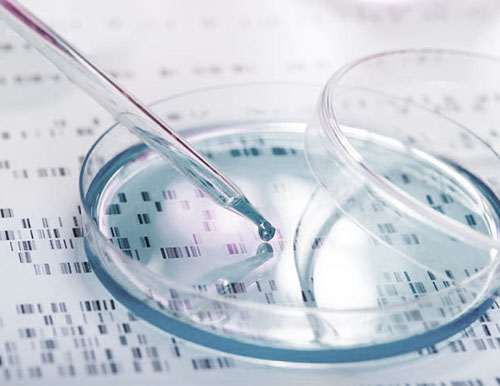
Cell Therapy: Revolutionizing Modern Medicine
One of the most innovative approaches in biomedical science is cell therapy, which treats or prevents diseases using live cells. Through the body’s innate ability to heal, researchers and healthcare professionals have researched innovative treatments for diseases that had no cure. [1] Using a wide range of cell types as a part of the therapy or treatment for diseases is possible because of modern technology and innovation.
Following the discovery of human blood types, the first blood transfusion marked the beginning of cell therapy’s history. In 1957, E. Donnall Thomas performed the first allogeneic hematopoietic stem cell transplant (HSCT), which led to a global breakthrough in stem cell research and treatment.[2]
In the 1970s, Fred Appelbaum expressed concerns about the efficacy of bone marrow transplants due to the high patient death rates. Those who lived experienced chronic graft-versus-host disease (GVHD). Because the transplanted immune cells viewed cancer cells as alien intruders, this immune response remarkably decreased the risks of cancer recurrence. The idea that bone marrow transplants may serve as a preventive intervention was sparked by this finding, which ultimately opened the door for cell therapy, which uses live cells as treatment. In cell therapy, a patient receives viable cells to replace damaged or unhealthy cells, repair damaged tissues, or change immune responses.
Autologous cells (from the patient) or Allogeneic cells (from a donor) are used in therapy while other cell types, such as pluripotent stem cells or modified cell lines can also be used. Removing cells from a patient’s body, altering them outside, and returning them to the same person is “autologous cell therapy”. This method lowers the risk of immunological rejection because the cells come from the patient. Allogeneic cell therapy, on the other hand, uses cells from a donor, such as a healthy person who is compatible or matched with the patient.[3]Stem cell treatment, immunological cell therapy, and regenerative cell therapy are examples of cell therapy.[4]
Cell Therapy may be used to treat cancer, autoimmune diseases, urinary diseases, and infectious diseases, repair spinal cord injuries, restore damaged joint cartilage, boost a compromised immune system, and assist individuals with neurological conditions.[1] The global market for cell therapy is expected to reach USD 23.0 billion by 2028, up from USD 9.5 billion in 2021. Genetically modified or prepared cells are administered via topical applications, injectables, infusions, or bioscaffolds.[4] Cell therapy is an improvised treatment as well as a biomedical revolution. It provides a ray of hope for both, patients and medical professionals because of its capacity to alter the immune system, repair tissues, and target diseases at the cellular level.
References:
1. Facts about cellular therapies. (n.d.-b). www.aabb.org. https://www.aabb.org/news-resources/resources/cellular-therapies/facts-about-cellular-therapies
2. New York Blood Center Enterprises. (2024, March 1). The history of cell therapy & Cellular apheresis. https://www.nybce.org/news/articles/the-history-of-cell-therapy-cellular-apheresis/
3. Cell Therapy Basics |. (n.d.-b). https://patienteducation.asgct.org/gene-therapy-101/cell-therapy-basics
4. El-Kadiry, A. E., Rafei, M., & Shammaa, R. (2021). Cell Therapy: Types, Regulation, and Clinical Benefits. Frontiers in medicine, 8, 756029. https://doi.org/10.3389/fmed.2021.756029
-
Sanjana Shah is a Life Science Graduate inclined towards innovative healthcare solutions. With hands-on experience in molecular biology and analytical research, she has contributed to various studies in venom biochemistry, nanoparticle synthesis and forensic studies. She is an aspiring biomedical scientist passionate about bridging the gap between research and application in biomedical sciences. Driven by curiosity and the desire to innovate in biomedicine, she aims to improving patient outcomes through meaningful contributions to transformative field of biomedical science.
-
Dr Kranti Suresh Vora is an obstetrician turned public health professional turned entrepreneur. Dr Vora did her MPH from Johns Hopkins School of Public Health, Baltimore, USA and PhD from the University of Maryland, College Park, USA. Dr Vora has Worked at Indian Institute of Management, Ahmedabad, and Indian Institute of Public Health Gandhinagar. Dr Vora has collaborated internationally with Karolinska Institutet, University of Aberdeen, McGIll University and University of Canberra among others. Dr Vora is a founder director at QRL Bioscience Pvt Ltd. Her interests include clinical research, Health innovations for low-cost treatment, and Cancer research.
ABOUT US
QRL Bioscience Private Limited
CIN: U72200GJ2023PTC140362
QRL Bioscience has developed Autologous Advanced Biologics (AAB) platform to develop novel therapeutics for treating chronic degenerative diseases such as chronic wounds and osteoarthritis.
LINKS
CONTACT US
Plot No. E7+E8/13, First Floor, GIDC Electronic Estate, Sector 26, Gandhinagar - 382023
+919879514046
info.qrlbioscience@gmail.com
Copyright © 2025 QRL Bioscience Private Limited. All rights reserved.
Designed & Developed By : UiX Studios LLP
